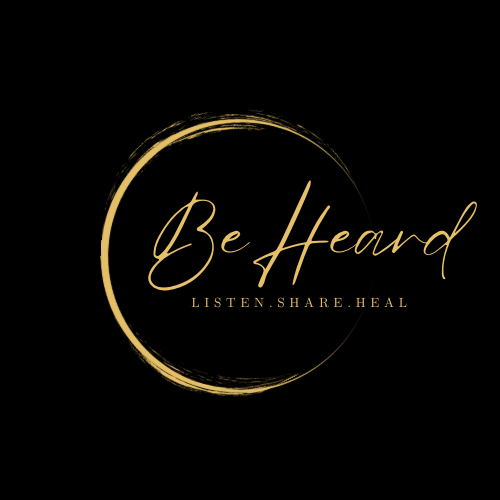Finding Support: Resources for Survivors of Abuse
- Branden Thomas
- Nov 3
- 4 min read
Abuse leaves deep scars that affect every part of a survivor’s life. Finding the right support can feel overwhelming, but it is a crucial step toward healing and rebuilding. This post explores practical resources available to survivors of abuse, offering guidance on where to turn for help, what types of support exist, and how to access them.

Understanding the Need for Support
Survivors of abuse often face complex challenges, including emotional trauma, physical injuries, and social isolation. These challenges can make it difficult to ask for help or know where to start. Support resources provide a foundation for safety, recovery, and empowerment.
Support can come in many forms:
Emotional support through counseling or peer groups
Legal assistance to navigate protective orders or custody issues
Medical care for physical and psychological injuries
Practical help such as housing, financial aid, or childcare
Knowing what resources exist and how to access them can make a significant difference in a survivor’s journey.
Types of Support Available
1. Crisis Hotlines and Helplines
Crisis hotlines offer immediate, confidential help 24/7. Trained responders listen without judgment and provide guidance on next steps.
Examples include:
National Domestic Violence Hotline (USA): 1-800-799-7233
Childhelp National Child Abuse Hotline: 1-800-422-4453
Rape, Abuse & Incest National Network (RAINN): 1-800-656-4673
These hotlines can connect survivors to local shelters, counseling, and legal aid.
2. Shelters and Safe Housing
Many communities have shelters that provide emergency housing for survivors and their children. These shelters offer a safe place to stay, meals, and access to support services.
Shelters often help with:
Safety planning to avoid further harm
Connecting survivors with social workers and counselors
Assistance with finding long-term housing options
Survivors should contact local domestic violence organizations or hotlines to find nearby shelters.
3. Counseling and Therapy
Professional counseling helps survivors process trauma, rebuild self-esteem, and develop coping skills. Therapy options include:
Individual counseling
Group therapy with other survivors
Specialized trauma therapy such as EMDR (Eye Movement Desensitization and Reprocessing)
Many organizations offer free or low-cost counseling services. Some therapists specialize in abuse recovery and understand the unique challenges survivors face.
4. Legal Assistance
Navigating the legal system can be intimidating. Legal aid organizations provide help with:
Obtaining restraining or protective orders
Child custody and visitation rights
Divorce and separation proceedings
Reporting abuse to law enforcement
Some organizations offer free legal clinics or connect survivors with pro bono attorneys.
5. Medical Care
Survivors may need medical attention for injuries or ongoing health issues related to abuse. Medical professionals can also document injuries for legal cases.
Many hospitals and clinics have protocols to support abuse survivors, including:
Confidential examinations
Referrals to counseling and social services
Safety planning advice
6. Support Groups
Peer support groups create a space where survivors can share experiences and encouragement. These groups reduce isolation and build community.
Groups may be:
In-person or online
Focused on specific types of abuse or demographics
Facilitated by professionals or peer leaders
Joining a support group can help survivors feel understood and less alone.
How to Access Resources Safely
Finding support can be risky if the abuser monitors communication or controls access to phones and computers. Here are tips for accessing help safely:
Use a trusted friend’s phone or a public phone to call hotlines
Clear browser history after searching for resources online
Arrange meetings in safe, public places
Create a safety plan before reaching out for help
Keep emergency numbers written down in a hidden place
Local domestic violence organizations often provide guidance on safety planning and discreet ways to seek help.
Examples of Organizations Providing Support
Safe Horizon: Offers comprehensive services including counseling, legal help, and shelter.
The National Coalition Against Domestic Violence (NCADV): Provides resources and advocacy.
Women’s Law Project: Focuses on legal rights and protections for survivors.
Child Welfare Information Gateway: Offers resources for child abuse survivors and families.
Each organization has different programs and eligibility requirements, so contacting them directly is the best way to learn about available services.
Building a Support Network
Support does not have to come from professionals alone. Friends, family members, coworkers, and community members can play a vital role.
Ways to build a support network:
Identify trusted individuals who will listen without judgment
Share your needs and boundaries clearly
Connect with community groups or faith organizations
Participate in activities that promote healing and self-care
A strong support network can provide emotional strength and practical help during recovery.
Taking the First Step
Reaching out for support is often the hardest part. Survivors may feel fear, shame, or uncertainty. Remember that help is available, and no one deserves to suffer abuse.
If you or someone you know needs support:
Call a crisis hotline for immediate help
Visit a local shelter or community center
Seek counseling or medical care
Talk to someone you trust
Every step toward support is a step toward healing and safety.
Finding the right resources can transform a survivor’s path from isolation to empowerment. By knowing where to turn and how to access help safely, survivors can begin to rebuild their lives with strength and hope. If you are a survivor or supporting someone who is, take action today to connect with the support needed for recovery.




Comments